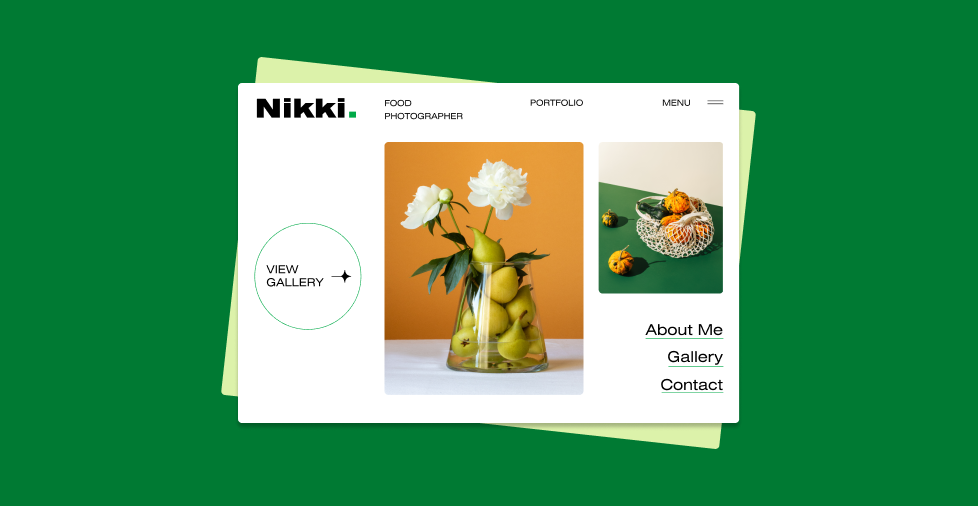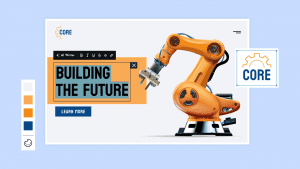Key takeaways:
- A portfolio website serves as an online representation of your work, skills, and professional identity.
- Effective portfolios are simple, well-organized, and easy to navigate, with a focus on quality projects and clear presentation.
- Once published, portfolios benefit from active promotion through professional networks, social platforms, and digital marketing services.
A design portfolio is one of the strongest tools a creative can have. It shows your skills, your style, and the results you deliver. It gives potential clients and employers a clear picture of what you can do and why they should work with you.
The good news is you don’t need to overcomplicate the process. With a few smart steps, you can put your best work in one place and present it professionally.
This guide will walk you through everything from choosing a domain to showcasing your projects and getting your site in front of the right people.

What is a portfolio?
A portfolio is essentially where your skills, style, and creative thinking come together. It shows people the results you can deliver.
A strong portfolio is one of your best assets for showing your expertise and attracting new opportunities.
For most designers, a strong portfolio will include:
- Projects that highlight your best and most relevant work
- Case studies that explain the challenge, process, and outcome
- Personal details like a short bio, your services, and your design philosophy
When thoughtfully put together, a portfolio becomes proof of your professionalism and a way for clients or employers to quickly see the value you bring.
What makes a great portfolio?
Every excellent portfolio shares certain traits that help it stand out, connect with viewers, and convert interest into action.
The key elements of a good portfolio include:
| Element | Why it matters |
| Clear focus | Shows the type of work you do best and attracts the right clients |
| Curated, high-quality work | A handful of strong projects makes more impact than a large mix |
| Strong visuals | Crisp, professional images set the tone for your skills and attention to detail |
| Easy navigation | Simple menus and layouts keep visitors engaged and exploring |
| Personal branding | A distinct voice and style help people remember you and build trust |
| Concise project descriptions | Short explanations highlight your process and outcomes without overwhelming text |
| Calls to action | Clear contact info or “hire” buttons make it easy for people to reach out |
| Fast load time | Optimized pages and images improve user experience and SEO |
| Regular updates | Adding new work keeps your portfolio fresh and relevant |
9 steps to create your design portfolio website
Building a portfolio can feel like a big project, but it’s much easier when you take it step by step. By the end, you’ll have an online portfolio that not only looks good but also works hard for your career.
Follow these steps to build your online design portfolio:
- Step 1. Choose your domain name and website builder
- Step 2. Get inspired by other portfolios
- Step 3. Pick a template or design with AI
- Step 4. Curate your best projects
- Step 5. Write clear case studies
- Step 6. Add the right sections to your site
- Step 7. Optimize for SEO and mobile
- Step 8. Publish and promote
- Step 9. Keep your portfolio updated regularly
Step 1. Choose your domain name and website builder
Every portfolio needs a home on the web, and it starts with your domain name. It should be simple, memorable, and tied to your personal brand.
For most designers, using your own name works best (janedoe.design or johnsmithstudio.com). But you can also play with creative extensions like .design, .studio, or .art if they feel like a better fit.
Next, choose a website builder. Pick one that makes setup quick and gives you the freedom to customize without needing code. An AI-powered builder can create a polished draft in minutes so you can focus on adding projects and case studies instead of building from scratch.
Step 2. Get inspired by other portfolios
Before you get into templates or AI tools, give yourself a chance to explore what’s out there. Think of this step as creative research as it sets the tone for the kind of portfolio you want to build.
Here are a few types of portfolios worth browsing for inspiration:
UX portfolio
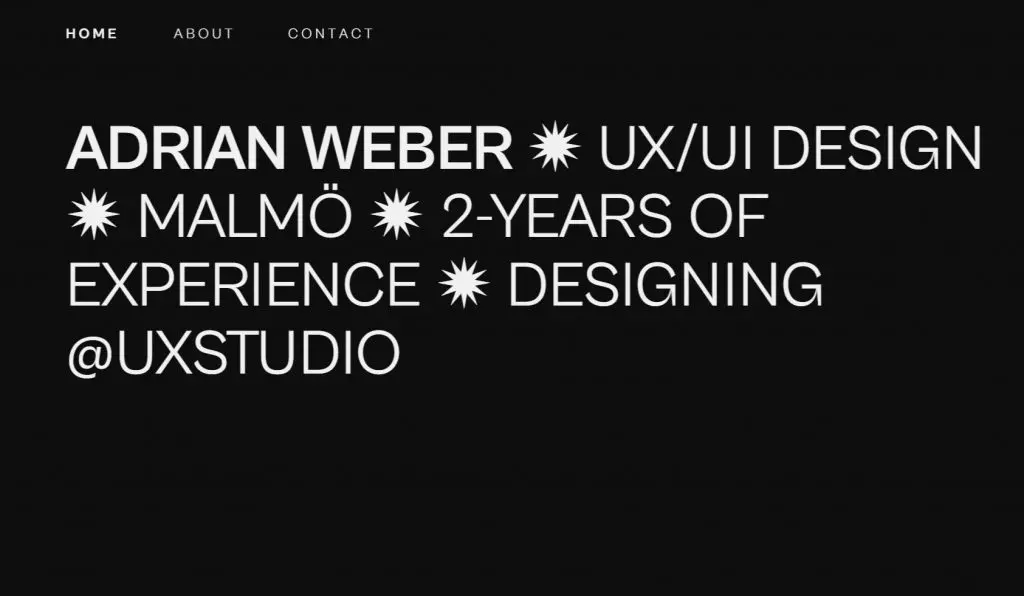
Source: https://uxfol.io/adrian-weber?utm_source=blog&utm_medium=header-link&utm_campaign=examples
Graphic design portfolio
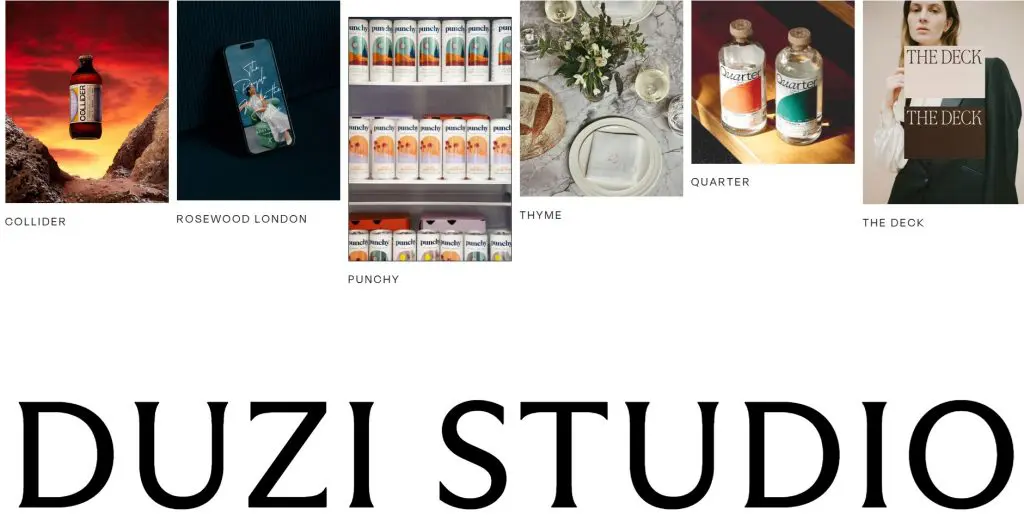
Source: https://www.duzi.studio/
Web designer portfolio
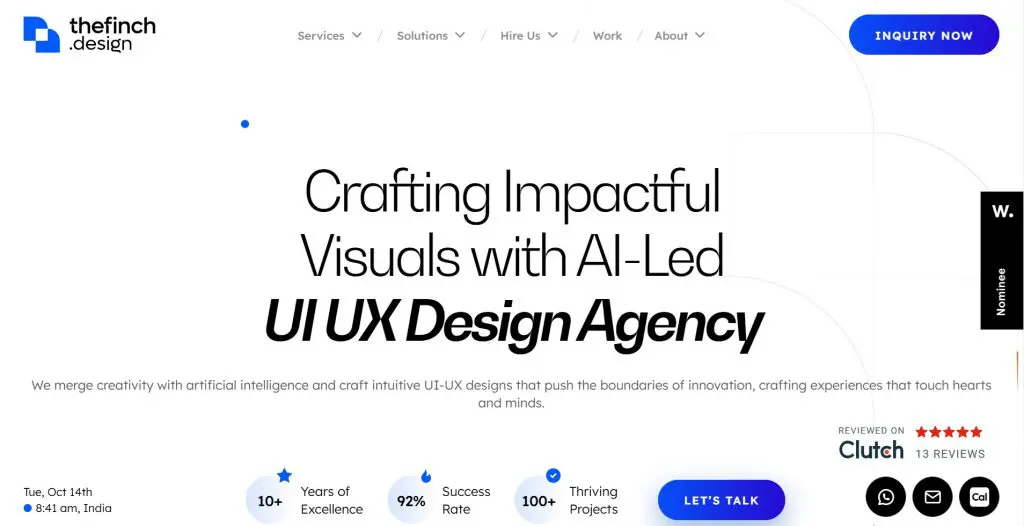
Source: https://thefinch.design/
Illustrator portfolio
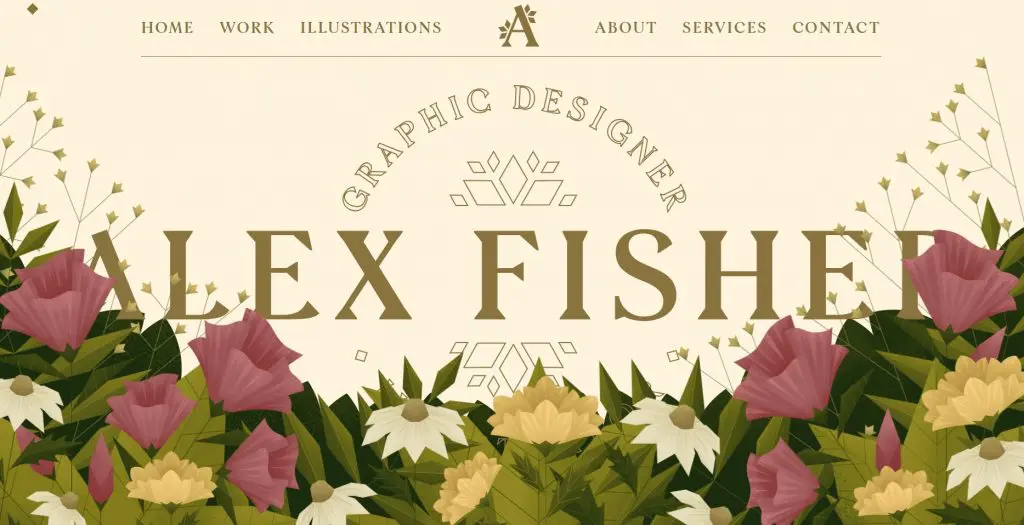
Source: https://www.alexfisherdesign.ca/
As you browse, notice the details. Do you like clean, minimalist layouts that keep the focus on the work? Or do you prefer bold, colorful pages that show off personality? How do designers present their projects, through case studies, big hero images, or quick captions?
By the end of this step, you’ll have a sense of the vibe you want your portfolio to give off. That makes choosing a template or generating a design with AI in the next step much easier—and much more you.
Step 3. Pick a template or design with AI
How do you want visitors to move from one page to the next? What do you want them to see first? These are the kinds of questions you’ll be asking yourself at this stage because now it’s time to design your actual site.
There are two simple ways to get started here:
- Choose a template. Most portfolio website builders offer ready-made templates you can start with. These give you a solid structure, so you don’t have to design everything from scratch. You can choose from our huge selection of templates across all sorts of industries that fits your style.
- Design with AI. If you’d rather skip the manual setup, AI website builders can do the heavy lifting. With an AI Builder, you can simply chat with AI about the type of portfolio you want to build, and it’ll generate a custom site for you in minutes.
Step 4. Curate your best projects
One of the hardest parts is deciding what to include. It’s tempting to upload everything you’ve ever done, but your portfolio works best as a highlight reel.
Aim for six to ten projects that represent your skills and the kind of work you’d like to do more of. Keep it fresh by updating regularly as you grow.
Here are a few more things to consider when curating your projects:
- Pick strategically. Select projects that show range but also align with the clients or jobs you’re targeting.
- Show your role clearly. Highlight what you personally contributed, whether it was UI design, branding, or usability testing.
- Balance variety with focus. A mix of different project types (e.g., a UX flow, a brand identity, and a web layout) proves versatility, but make sure every piece supports the type of work you want to be known for. Avoid adding projects just to fill space.
- Tell the story. Pair visuals with a short narrative: the problem, your process, and the outcome.
- Lead with your strongest work. Put your most impressive projects first as they set the tone for everything else.
Step 5. Write clear case studies
Great visuals catch attention, but what really sets your portfolio apart is showing the story behind the work. Case studies give people a peek into your problem-solving process: what challenge you faced, how you approached it, and what results you delivered.
This context shows that you’re someone who can deliver real solutions. Keep it short, structured, and easy to skim so visitors get the big picture fast.
Want to make your portfolio really stand out? Read How To Create an Online Portfolio: Expert Tips for Success.
Quick tips for stronger case studies:
- Frame each project as a process. For example, a graphic designer might explain how they turned a vague brief into a brand identity, a web designer could describe how they streamlined a cluttered site, and a UX designer might show how they improved a checkout flow.
- Pair text with visuals. Use before-and-after shots, annotated wireframes, or brand mockups so viewers see your thinking, not just the final product.
- Show results. Add numbers where you can: “Cut cart abandonment by 40%,” or “Boosted engagement by 25%.” If data isn’t available, mention qualitative impact (e.g., smoother navigation).
- Clarify your role. Say what you personally did: “Led usability testing,” or “Designed UI components.” Don’t leave people guessing.
- Keep it skimmable. Use short sections (Challenge, Approach, Solution) or bullets so people can grasp your value at a glance.
Here’s an example of a portfolio that uses clear and compelling case studies. The designer clearly explains his role and results for each project:

Karolis Kosas’ homepage
Step 6. Add the right sections to your site
A good portfolio is a complete snapshot of you as a designer. To make your site feel polished and professional, you’ll want to include a few key sections beyond your work samples. Think of it as giving visitors everything they need to understand your skills, your style, and how to get in touch.
Quick tips on what to include:
- Projects. Show 6–10 of your best works with short case studies. UX designers might add user flows; graphic designers can highlight before-and-after rebrands.
- About me. Share what drives your work and your specialties. Keep it human—mention your design style or approach.
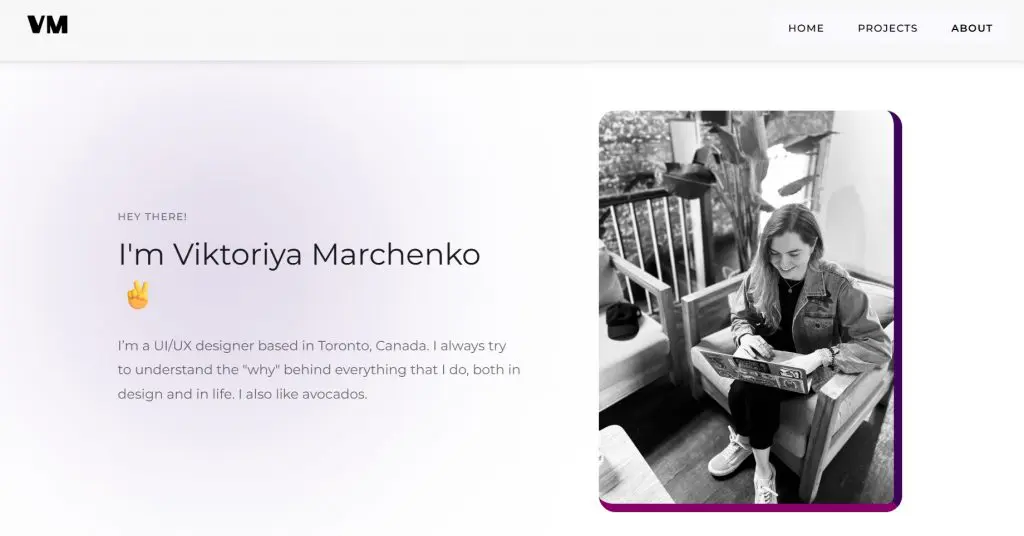
Viktoriya Marchenko‘s About page
- Services. Frame skills around client needs, like “Designing user flows that boost conversions” or “Branding systems that make businesses memorable.”
- Testimonials. Use short quotes that prove impact (e.g., “Their redesign boosted our traffic by 30%”).
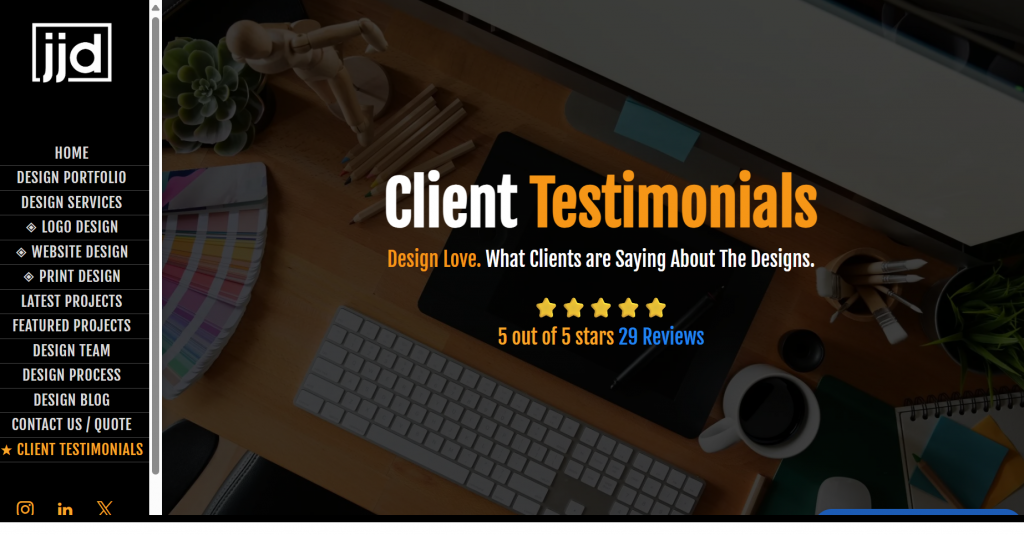
Justin Jenkin’s homepage
- Contact/CTA. Make it easy to hire you with a clear button like “Work With Me.”
- Social Links. Add Behance, Dribbble, or LinkedIn so clients can see more of your work
Ready to design your portfolio like a pro? Read How To Design a Website for Beginners: A Step-By-Step Guide to learn the basics of layouts, templates, and testing for mobile.
Step 7. Optimize for SEO and mobile
What good is an online portfolio if no one sees it? Optimizing for search engines helps your site appear higher on Google, so potential clients can find you.
SEO improves discovery and gives visitors a smoother experience. It’s not a one-time task but getting the basics right from the start makes a big difference.
Here are some ways to get started with SEO:
- Create fresh content. Add updates or even short blog posts to keep your site active. Google loves new content, and visitors will see you’re engaged in your craft.
- Do keyword research. Think about the terms clients might type into Google, like “freelance brand designer” or “Toronto UX portfolio.” Work those naturally into your site’s text, headings, and project descriptions.
- Write alt text for images. Since portfolios are image-heavy, this is huge. Describe each project image briefly (e.g., “branding package for coffee shop”)—it boosts accessibility and helps search engines understand your work.
- Add titles and metadata. Every page should have a clear title and short description that tells both Google and users what it’s about. This is what shows up in search results.
- Use local SEO if relevant. If you take on clients in your city, include your location on your site, register on Google Business, and add your portfolio to local directories.
- Make it mobile-friendly. Make sure your portfolio looks and works just as well on phones and tablets as it does on desktops. Use responsive templates, test on multiple devices, and keep buttons and text large enough to tap and read easily.
Step 8. Publish and promote
After all the effort you’ve put into building your portfolio, don’t just let it sit quietly online—get it out into the world. Publishing is only the first step; promoting your site makes sure the right people see it. This gives your portfolio a spotlight so potential clients, employers, or collaborators can discover your work.
Here are some easy ways to promote your site:
- Add it everywhere. Include your portfolio link on LinkedIn, your resume, and even your email signature. These small touches keep your work one click away.
- Share on social media. Post highlights, behind-the-scenes looks, or case studies on platforms like Instagram, Twitter/X, or LinkedIn. This helps drive traffic back to your site.
- Use design communities. Upload projects to platforms like Behance or Dribbble, and link them back to your portfolio for more visibility.
- Reach out directly. If there’s a company or client you’d love to work with, send a thoughtful intro email and include your portfolio link. Sometimes all it takes is showing up at the right time.
Step 9. Keep your portfolio updated regularly
Your portfolio shouldn’t just show what you’ve done in the past. It should also make it clear how people can work with you right now. A simple “Services” section turns your site into more than a gallery by outlining what you offer, whether that’s branding, UX, web design, or illustration.
Keep it short and easy to scan. Instead of long descriptions, focus on the problems you solve and the value you bring.
For example, instead of just saying “Logo design,” frame it as “Creating brand identities that connect with your audience.” Pair this with a clear call-to-action, like a button that says, “Let’s Work Together,” so visitors know exactly how to get in touch.
How to build an online portfolio with Network Solutions
Your portfolio deserves a professional home, and with Network Solutions you can get both a custom domain and a ready-to-launch site in minutes.
Our AI Website Builder takes the guesswork out of design so you can focus on your projects.
Here’s how you can get started:
Step 1. Use the AI Website Builder
Instead of starting from scratch, you can use our AI Website Builder to generate a draft site in minutes.
- Begin by selecting the AI Builder option.
- Answer a few prompts about the type of site you want (e.g., “graphic design portfolio” or “UX case study site”) and your preferred style.
- The AI will create a ready-to-edit layout with sample pages and sections.
- Customize the draft using the drag-and-drop editor. Upload your projects, adjust fonts, tweak colors, and add your personal branding.
- Once ready, publish your portfolio with built-in hosting and SSL included.
All our Website Builder plans come with a free custom domain for your first year, so you can launch your site with a name that’s truly yours.
Step 3. Choose and customize a template
Even with an AI draft, you can switch to a template designed for portfolios. We offer options with clean grids, large image displays, and modern layouts. All templates are mobile-responsive, so your portfolio looks great on any device.
Step 4. Add your projects and case studies
Use the built-in editor to upload images and write short case studies. Structure each project well and pair it with visuals like mockups, wireframes, or before-and-after shots. You can also use AI writing tools to polish your copy if needed.
Step 5. Publish and maintain your site
When you’re satisfied with your portfolio, publish it with one click. Your domain and hosting are already set up through Network Solutions.
Update regularly with new projects, use the SEO tools to add meta tags and alt text, and explore our built-in marketing features like email campaigns and analytics to help promote your work.
Want to see it in action? Brian McMullin, SVP of Product at Network Solutions, walks you through how to build your site with the AI Website Builder in this quick tutorial.
Using Network Solutions means you get a site that’s not only easy to build but also mobile-friendly and SEO-ready.
Design and UX tips for portfolio websites
A great portfolio isn’t just about what you show, but how you show it.
Design and user experience (UX) play a huge role in how visitors interact with your site. If your portfolio feels confusing or slow, people may leave before they even get to your work. The goal is to make the experience smooth, enjoyable, and focused on your projects.
Here’s how you can do that:
- Decide on one-page vs. multi-page layouts
- Use image optimization
- Design clear navigation
- Think of accessibility
Decide on one-page vs. multi-page layouts
The structure of your portfolio sets the tone for how people move through your work. Some designers prefer a sleek, one-page layout, while others need a multi-page setup to organize more content.
- A one-page layout works best if you’re showcasing a smaller number of projects—it keeps the experience simple and smooth.
- A multi-page layout is ideal if you want to dive deeper into case studies, add extra sections like a blog, or separate projects by type.
Think about how you want visitors to explore. Should they scroll through everything at once, or click through categories to find what’s most relevant?
Use image optimization
Visuals are the star of any portfolio, but large or poorly formatted images can slow down your site and frustrate visitors. Optimizing your images helps you strike the balance between quality and performance.
Here’s how to optimize images better:
- Compress files so they load quickly without sacrificing sharpness.
- Use modern formats like WebP that keep quality high while reducing size.
- Turn on lazy loading so images appear as people scroll instead of all at once.
- Keep thumbnails consistent in size and proportion for a clean, professional feel.
Design clear navigation
Visitors should be able to find what they’re looking for without effort. Keep your navigation menu simple and obvious. If you have a lot of projects, use filters or categories to help people sort by type. Clear navigation makes your work easier to explore and leaves a more professional impression.
Think of accessibility
Design is for everyone, so make sure your site is easy to use for all visitors. Adding alt text to images, choosing colors with good contrast, and ensuring text is legible are simple steps that make your portfolio more inclusive. Accessibility also improves your search rankings, so it’s a win all around.
Start showcasing your work online
A portfolio website is a powerful way to share your skills, style, and professional identity. By curating your best work and presenting everything in a thoughtful layout, you create a site that builds credibility and helps people understand the value you bring. A well-maintained portfolio also makes it easier for clients and employers to connect with you and see your growth over time.
Once your site is live, focus on getting it in front of the right audience. Our professional digital marketing services can help you promote your portfolio through SEO, social media, and online advertising. These services give your work greater visibility and increase the chances of attracting clients, collaborations, and new opportunities.
Frequently asked questions
A design portfolio should include 6–10 of your strongest projects, each with a short case study showing the problem, process, and outcome. Add an About Me page, contact details, and optional extras like testimonials or services.
Most experts recommend 6–10 well-chosen projects. That’s enough to show variety without overwhelming viewers, and it keeps attention on your best work.
Yes, having your own site gives you more control and credibility. Platforms like Behance or Dribbble are great for visibility, but having your own website gives you full control. You decide how your projects are shown, how visitors navigate your site, and how clients can get in touch.
Keep it simple: outline the challenge, explain your process, and show the results. Use images to support the story and make sure your role is clear. Case studies don’t need to be long—clarity matters more than length.
